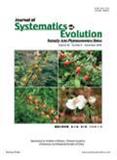Ai-Qin ZHANG;,Dun-Yan TAN;,Jin-Zhong ZHU
Some control tests and a technique employing the fluorescent properties of pollen and pollen tube stained with aniline blue dye were utilized to study the stigma receptivity, the optimum pollination period, the self-pollen clogging effect, pollen germination and the pollen tube growth state in alfalfa. The results can be summarized as follows: (1) The stigma receptivity and flower longevity barely overlap. On the first day after pollination, the pollination efficiency was the highest, with a pod-seting rate per raceme of 65.17%±2.01% (P<0.01). The period of the highest pollination efficiency was the same as the peak of stigma receptivity. When pollination was on the fourth day after flowering, the pod-setting percentage per raceme was still 34.25%±6.73%. (2) Self-pollination led to a lower pollen germination frequency and a lower pollen tube growth rate than cross-pollination. When artificial cross-pollination was applied after self-pollen grains on the stigma was re-moved, the pod-setting percentage per raceme was 72.31%±6.24%, and the number of seed per pod was 3.46±0.25, In contrast, these two values were 51.76%±5.37% (P<0.01) and 2.11%±0.18 respectively (P<0.01) when the self-pollen grains were not removbed in the artificial cross-pollination experiements. Hence, the clog-ging effect of self-pollen to stigma was significant. (3) In the breeding system of alfalfa, there are two mecha-nisms that help the plants to avoid self-fertilization: dichogamy and self-incompatibility. However, due to the structure of flowers, they were not effective enough to improve cross-fertilization rate, even if the stamen matured earlier than the stigma. The typical self-incompatibility system guaranteed the lower self-fertilization rate, but cannot avoid the reproductive interference of self-pollen.

